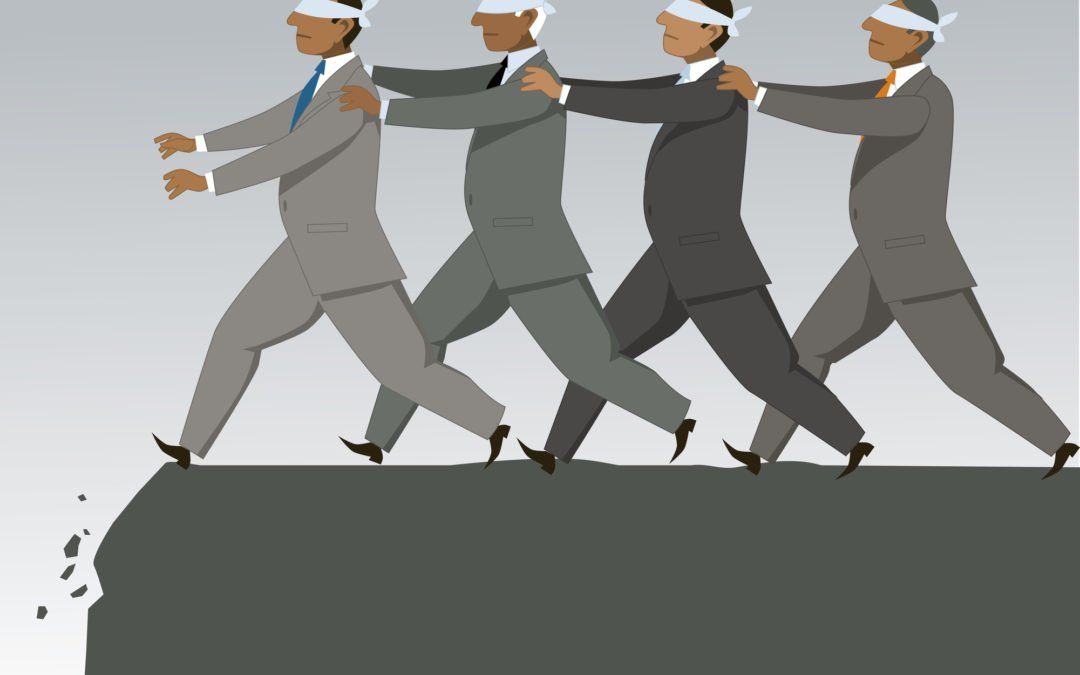B&G BLOG

AN EXCERPT FROM THE ONE THING BY GARY KELLER (pages 214-216)
One evening, a young boy hopped up on his father’s lap and whispered, “Dad we don’t spend enough time together.” The father who dearly loved his son knew in his heart this was true and replied “You’re right, I’m so sorry. But I promise I’ll make it up to you. Since tomorrow is Saturday, why don’t we spend the entire day together? Just you and me!” It was a plan and the boy went to bed that night with a smile on his face envisioning the day excited about the adventurous possibilities with his pops.
The next morning his father rose earlier than usual. He wanted to make sure he could still enjoy his ritual cup of coffee with the morning paper before his son awoke, wound up and ready to go. Lost in thought reading the business section, he was caught by surprise when suddenly his son pulled the newspaper down and enthusiastically shouted “Dad. I’m up. Let’s play!” The father although thrilled to see his son and eager to start the day together, found himself guilty craving just a little more time to finish his morning routine. Quickly racking his brain, he hit upon a promising idea he grabbed his son, gave him a huge hug, and announced that their first game would be to put it to put a puzzle together, and when that was done, “We will head outside to play for the rest of the day.”
Earlier in his reading he had seen a full page ad with a picture of the world. He quickly found it again and tore it into little pieces and spread them onto the table. He found some tape for his son and said, “I want you to see how fast you can put this puzzle together.” The boy enthusiastically dove right in while his father, confident that he had now bought some extra time, buried himself back in the paper. Within minutes, the boy once again yanked down his father’s newspaper and proudly announced, “Dad I’m done!” The father was astonished. For what lay in front for what lay in front of him- whole, intact, and complete- was a picture of the world back together as it was in the ad and not one piece out of place.
In a voice mixed with parental pride and wonder, the father asked, “How on earth did you get this done so fast?” The young boy beamed. “It was easy Dad! I couldn’t do it first and I started to give up, it was so hard . But then I dropped a piece on the floor and because it’s a glass top table, when I looked up I saw there was a picture of a man on the other side. That gave me an idea!”
…”when I put the man together, the world just fell into place.”
I read this for the first time a few years ago. I now read it a couple times a year to reinforce counterbalancing what life has to offer personally, professional and financially. I hope you all enjoy pondering it as I do.
Happy Father’s Day!

By Louis Forbringer Ph.D. and Suzanne Miklos Ph.D.
Some leaders put coaching on hold during a crisis when in fact it should be the opposite. It is easy to dispense with personal care, grooming, and development during this pandemic. One-on-ones move from development to operational issues. For many, there are urgent tasks which drown out the developmental opportunities that only exist in a crisis. Some people are in a state of flight, fight, or freeze. Coaching helps bring the frontal cortex back online to make sense of the events, determine what is controllable and what is not and to set priorities for action. But, this type of coaching, though valuable, is not the highest use of your coaching efforts.
The true value of coaching is to capitalize on the development opportunities embedded in a disruption. Coaches know that disruption or “breaks” are valuable because the introspective opportunities that appear during them are not available to us when our worlds flow smoothly. Don’t miss the opportunity to building capacity that translates to the future. The following questions provide a platform for developmental conversations that will bear fruit.
- What are we made of? Demonstrating grit and resilience is only possible when times are tough. Senior leaders can observe and provide feedback to their managers on how they are exhibiting empathy, optimism, and social intelligence in helping their teams work collaboratively and productively in a remote context.
- What are my leadership intentions? Having a personal mission statement for the difference that each of us wants to make in our organizations and the lives of others provides clarity and focus. We ask our clients to look back at their assessment results and development plans to intentionally identify strengths that can be uniquely leveraged in this moment.
- What does my team need from me that they didn’t need 3 months ago? As an available, responsive leader, there is a need to be fluid and available. For some people, “other duties as may be required” is the whole job some days. Listening and responding with flexibility are needed. Some leaders who do not value social contact at work have found that they need to find creative ways to build comradery and levity for their teams.
- What one or two competencies can uniquely be developed in crisis? One client is focusing on Innovation on the fly and looking for opportunities to reward and thank managers for experimenting and adapting even if it doesn’t work out. Risk taking and learning can be accelerating during uncertainty.
- What strategic and collaborative opportunities are suddenly available? Reflection and stepping back to look at the bigger picture are difficult when work feels especially chaotic and busy. However, leaders and organization’s who thrive manage to pause, think and see opportunities to advance strategic goals. Once the storm has passed, the opportunities will have passed as well.
“Change your thoughts and you change the world” Norman Vincent Peale

The process of planning, assessing and recruiting talent allows companies to find the right technical and business competencies paired with the right leadership skills to fuel the organization's growth strategy. In most organizations, the availability of new technologies, big data, and product advancements are rapidly reshaping the demands on key leadership roles. Most of our clients are updating the expectations of traditional roles and launching new leadership functions to handle emerging risks and opportunities.
Putting in the effort to select, develop & retain the best leaders is not an easy road but it is the right path to growing or transforming a business.
Our clients tell us that mediocre talent is one of the biggest drags on profitability that they face. And yet many organizations default to only looking at the candidates already within their organization without identifying an external pool as well. Talent is the largest expense and most critical resource of any enterprise.
If the goal is to hire the best talent then strictly choosing to recruit internally or externally is like prescribing before diagnosing. The first step is to understand the strengths and diversity of available skill sets in the internal and the external candidate pool. Key characteristics such as learning agility, innovation and emotional intelligence are critical to roles, such as CFO, that in the past were largely driven by functional expertise only.
By broadening your talent pool to include both internal and external candidates you get a better understanding of what the entire market has to bare. Engaging industry leaders in a well-defined search process will deepen your company’s understanding of what the full potential of a specific leadership hire could be in the short and long term.
What does an exhaustive search accomplish?
- Allows the organization to understand how the market or function is strategically evolving
- Creates a clear understanding of what top talent looks like in your market
- Identifies the best possible talent for a given position, at that particular moment in time, taking in to account a full range of options
- Provides a company with valuable insight on their bench strength for succession planning by allowing internal and external candidates to compete for the same position
- Take-aways from a search done well allow an organization to really think about what methods they are deploying for developing leadership in their company that is consistent with its vision
Assessments are particularly important when what got you here won’t get you there. Executives cannot be evaluated just on their past experiences. It is critical to understand what they can and will do in a new context. Strategic problem solving, leadership skills, influence and innovation skills are examples of talents that emerge as even more important than specific technical skills. Professional assessments can predict future performance and potential pitfalls. A great recruitment process will identify multiple viable candidates and the assessment process can help describe how each will function and fit in the organization. Choosing between 2-3 great choices is more effective with a clear view of how each potential leader will show up to the role.

According to Goleman (2000), each leader naturally tends toward a specific style, yet the best leaders develop the versatility needed to succeed in a variety of contexts. One flavor is not for everyone or every situation. Once you are clear on your natural strengths as a leader, you can integrate complementary features for added versatility. Three key activities can help you find and foster your unique style.
- Find your Flow. “Flow” is a state of enjoyable absorption in what you’re doing, similar to how athletes refer to as being “in the zone” or “on fire.” To find flow, pay special attention when you feel like you are operating with easy concentration, confidence and energy. When you feel yourself working with energy and passion, what is the situation and what are you doing?
- Discover your Strengths. Ask your colleagues and even your family for adjectives that they would use to describe you. For example, two of mine were determined and creative. Once you identify these strengths, you will be better equipped to combine and cultivate them into a dynamic signature style.
- Consider the constellation of your strengths as the key to your Leadership Style
- Directive: I provide clarity and we get stuff done!
- Pace Setting: I run fast; keep up!
- Affiliation: I work through relationships.
- Democratic: I am one of the team and we decide as a team.
- Coaching: My role is to develop the players on this team.
- Inspiring: I see the future; come along because it is great.
Start with understanding your signature leadership style and why it works for you. In the next series of Blogs, we will discuss how and when to use each of these approaches so that you fully leverage your core style and manage the pitfalls of overuse by leveraging other flavors.
Developing a robust signature leadership style means being prepared for many different challenges and scenarios. The next six blog posts in this series provide snapshots of each of Goleman’s (2000) six leadership styles, showcasing how emphasizing and adding these facets to your signature style will make you a more dynamic and effective leader.

Leadership styles are like cars, with a variety of makes and models to choose from. There is no one best car, and cars are not created with the same goals in mind. It’s ideal to choose a car – and a leadership style – that leverages your natural values, talents and tendencies. It must also be equipped to handle the terrain, tasks, and passengers that it will encounter.
A pick-up truck is great for accomplishing tasks requiring special equipment or off-road driving and less well suited to carrying passengers in comfort. I had a minivan when I was in my soccer mom days but it did not get good mileage and had a limited fun factor for me. The entertainment system and roomy seats created lots of fun for the miniature athletes. Like choosing a car, considering the landscape and intended goals is key. Research shows that the success of any leadership style depends largely on the organizational culture and employee expectations (Walker & Aritz, 2015).
Developing a signature leadership style that fits both you and your “driving conditions” will help you motivate your team, unlock innovation and creative thinking, and reach your desired destination. Along with advantages in fit and function, a well-defined signature leadership style helps employees know what to expect from you and how to work with you most effectively.
Consider your values as a starting point to defining your own unique style. The following questions are a good start for your reflection.
- What star qualities have you most admired in other leaders? Is it someone who pushes or someone who calms? Is the person brilliant, a great communicator, or the best people developer you ever met?
- What is the impact that you want to have on the organization? Is it your role to fuel fast growth or focus on capacity and a sustainable culture?
- How do you want to be described by others?
- How would you describe yourself when you are at your best?
